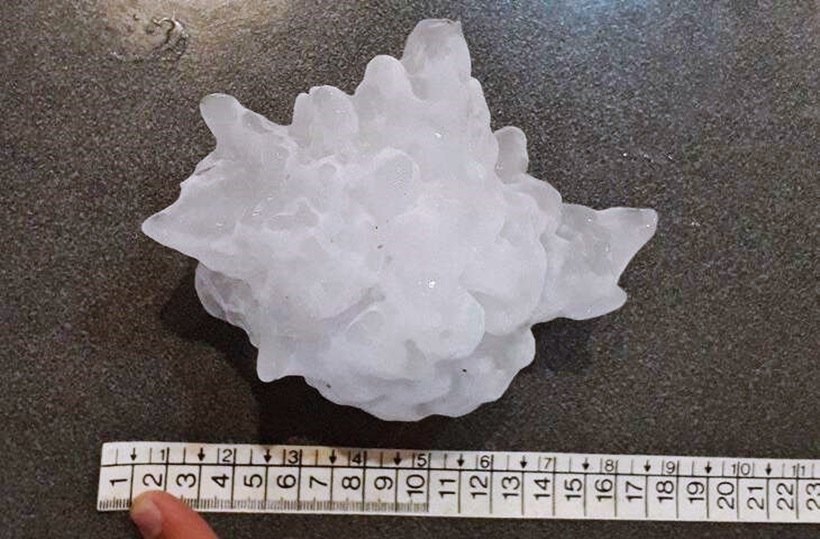A gargantuan hailstone that fell in Argentina may have set a world record, according to researchers. Credit: Victoria Druetta
Sat 02 May 2020:
A powerful storm that hit Villa Carlos Paz in Argentina two years ago produced the world’s largest hailstone, bigger than a volleyball, a US research team reported.
A hailstone is a lump of ice that has a round or irregular shape, ranging in diameter from a few millimeters to several centimeters. The researchers who examined the incident in 2018 found that at least one hailstone measured up to 9.3 inches in diameter, potentially setting a new world record.
A supercell thunderstorm pelted a city center in Argentina a few years ago with hailstones so large scientists suggested a new category to describe them—gargantuan hail.
Researchers investigating the 2018 storm found one hailstone likely measured between 7.4 and 9.3 inches across, potentially setting a new world record. The current record belongs to a hailstone that measured 8 inches across, or about the size of a volleyball, that fell near Vivian, South Dakota.
“It’s incredible,” said Matthew Kumjian, associate professor in the Department of Meteorology and Atmosphere Science at Penn State. “This is the extreme upper end of what you’d expect from hail.”
The scientists proposed hail larger than 6 inches should be classified as gargantuan, and said more awareness of these events, while rare, could help piece together a better understanding of the dangerous storms.
“Anything larger than about a quarter in size can start putting dents into your car,” Kumjian said. “In some rare cases, 6-inch hail has actually gone through roofs and multiple floors in houses. We’d like to help mitigate the impacts on life and property, to help anticipate these kinds of events.”
The storm in heavily populated Villa Carlos Paz, Argentina, offered scientists a rare opportunity to study a well-documented case of gargantuan hail. As the storm unfolded, residents took to social media, posting pictures and videos.
Researchers followed up on the accounts a year later, interviewing witnesses, visiting sites where damage occurred, collecting photogrammetric data and analyzing radar observations. Using photogrammetry—taking measurements from photographs—and video evidence, the scientists estimated one hailstone may have set a world record.
Think your friends would be interested? Share this story!





